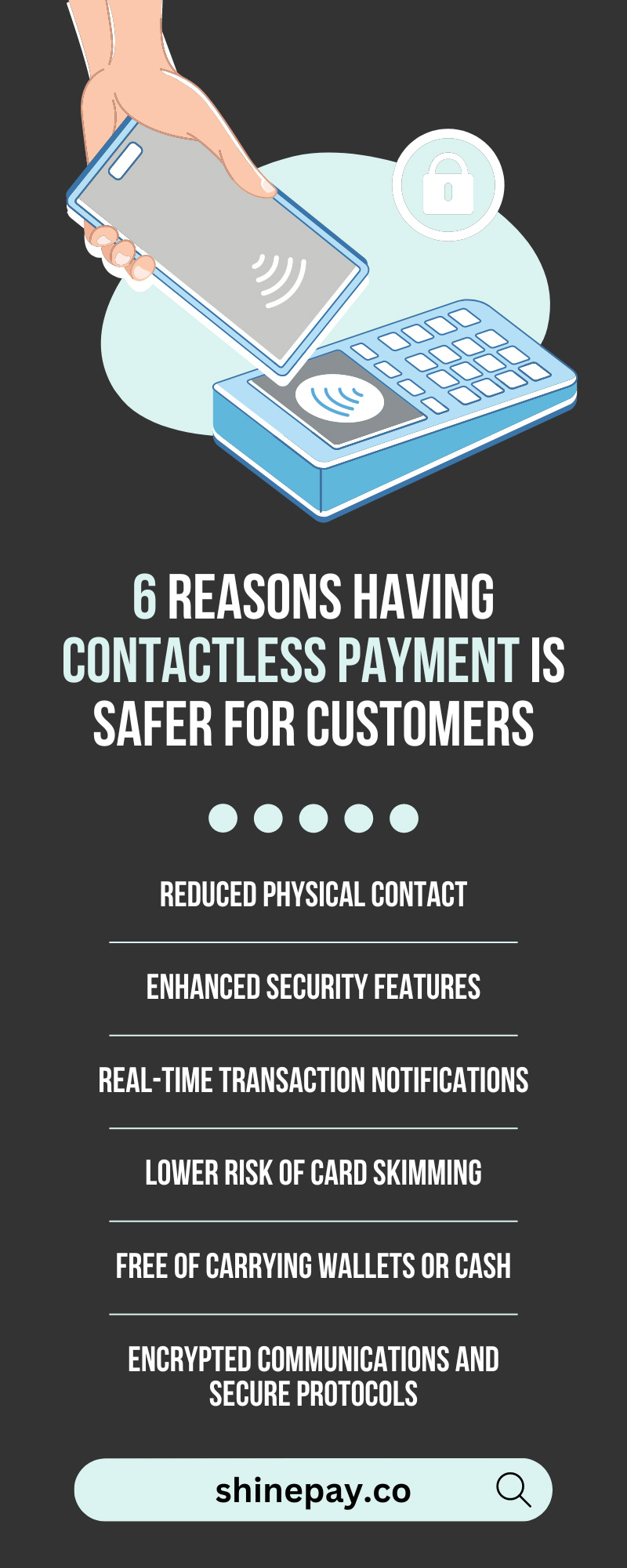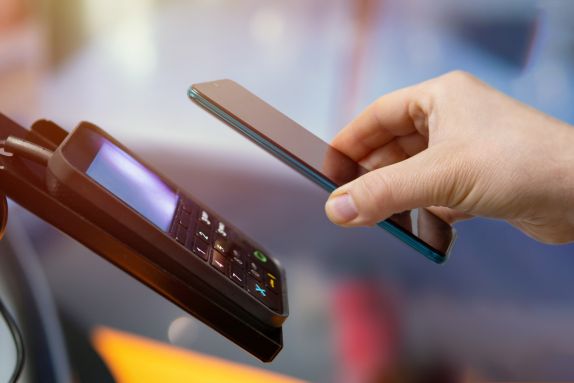In recent years, the landscape of financial transactions has significantly transformed with the rise of contactless payments. This innovative technology allows consumers to make purchases by tapping their credit or debit cards, smartphones, or wearable devices on a contactless-enabled terminal. As the adoption of contactless payments continues to grow, business owners should explore the six reasons this method is safer and more convenient for customers.
Understanding Contactless Payments
Contactless payments rely on near-field communication (NFC) and radio-frequency identification (RFID) technology. This enables secure communication between two devices when consumers bring them into close proximity, typically within a few centimeters. The transaction process involves a quick and secure exchange of information between the payment device and the point-of-sale terminal.
Why Contactless Payments Are Safer for Customers
Now, let’s delve into the reasons why contactless payments are a safer option for customers.
Reduced Physical Contact
One of the most apparent advantages of contactless payments is the minimal physical contact required to complete a transaction. In a world that has become hyper-aware of hygiene and the spread of germs, the ability to make purchases without handling cash or physically inserting a card into a machine is a significant safety benefit. Customers can tap their cards or devices on the payment terminal, minimizing the risk of exposure to bacteria or viruses present on surfaces.
This reduction in physical contact aligns with public health guidelines, making contactless payments a responsible choice, especially in high-traffic areas such as public transportation, restaurants, and retail stores. As customers become increasingly conscious of hygiene, the touch-free nature of contactless transactions provides a reassuring layer of safety.
Enhanced Security Features
Contrary to common misconceptions, contactless payments operate on robust security measures that protect customers from fraudulent activities. Most contactless transactions receive the same security standards as traditional card payments. Additionally, contactless payments often incorporate advanced security features, such as tokenization.
Tokenization involves replacing sensitive information, like card numbers, with unique tokens. In the context of contactless payments, these tokens facilitate transactions without exposing the actual card details. This adds an extra layer of security, as even if someone intercepts the token, it holds no value without the encryption key.
Moreover, many contactless payment methods have implemented biometric authentication, such as fingerprint recognition or facial identification, further safeguarding against unauthorized access. These security enhancements contribute to making contactless payments a secure and trustworthy option for consumers.
Real-Time Transaction Notifications
Contactless payments often come with the advantage of real-time transaction notifications. Many banks and financial institutions provide customers with instant alerts through mobile apps or text messages whenever a contactless transaction occurs. This immediate feedback allows customers to stay informed about their account activity and promptly detect any suspicious or unauthorized transactions.
The real-time monitoring of transactions empowers customers to take swift action in the event of a potential security breach. Whether it’s reporting a lost card, disputing a fraudulent charge, or keeping tabs on expenditures, the transparency provided by real-time notifications fosters a sense of control and security.
Lower Risk of Card Skimming
Traditional payment methods like swiping a card through a magnetic stripe reader are vulnerable to card skimming—a technique used by fraudulent actors to capture card information for unauthorized transactions. Contactless payments significantly mitigate this risk, relying on encrypted communication and dynamic authentication methods.
With contactless transactions, the card never leaves the customer’s possession, making it challenging for criminals to employ skimming devices. Additionally, the dynamic nature of the transaction data means that even if someone skims the card maliciously, it would be useless for any unauthorized transactions. This resistance to skimming makes contactless payments a more secure option compared to traditional magnetic stripe transactions.
Free of Carrying Wallets or Cash
Contactless payments have freed customers from carrying a traditional wallet or physical cash, alleviating concerns about loss or theft. In the era of digital transactions, individuals can now navigate their daily lives with a sense of freedom and security. The simplicity of tapping a card or smartphone to complete transactions replaces the need for bulky wallets filled with cash and an array of credit cards. This streamlines the payment process and minimizes the risk of losing valuable belongings.
With contactless payments, the worry of misplacing a wallet or falling victim to pickpocketing becomes a thing of the past, offering consumers a more carefree and convenient way to manage their finances. As the world increasingly embraces the era of contactless convenience, the days of fumbling through pockets and bags for physical currency are gradually fading away.
Encrypted Communications and Secure Protocols
Contactless payments leverage encrypted communication and adhere to secure protocols, making it difficult for hackers to intercept and manipulate the transaction data. The communication between the payment device and the terminal occurs over short distances and features protected encryption, ensuring the confidentiality and integrity of the transmitted information.
The secure protocols employed in contactless payments continually evolve to address emerging threats. Financial institutions and technology providers invest in research and development to stay ahead of potential vulnerabilities, implementing updates and patches to enhance the overall security of the contactless payment system.
Adopting Contactless Payments
By embracing contactless payments globally, we will notice a pivotal shift in how consumers interact with the financial world. Beyond convenience, the safety features embedded in contactless transactions make them a compelling choice for customers. From minimizing physical contact to employing advanced security measures, contactless payments align with the evolving expectations of safety-conscious customers. As technology continues to advance, the future of payments is undoubtedly touchless, offering a seamless and secure financial experience for individuals around the globe.
With a deeper understanding of these six reasons why having contactless payments is safer for customers, you can boost the reliability of your transactions and the reputation of your business! If you’re looking for the next safe contactless payment system, look no further than ShinePay. Your customers and their cash will remain secure when you offer seamless access control solutions. Join the contactless revolution today and allow your consumers to pay with confidence and peace of mind!

